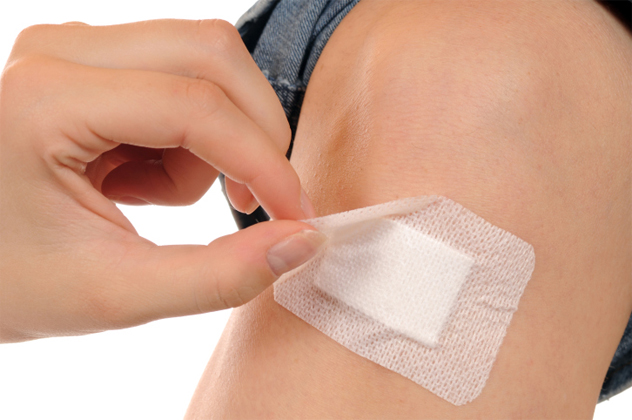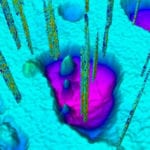 Music
Music  Music
Music  History
History 10 Less Than Jolly Events That Occurred on December 25
 Weird Stuff
Weird Stuff 10 Funny Ways That Researchers Overthink Christmas
 Politics
Politics 10 Political Scandals That Sent Crowds Into the Streets
 Weird Stuff
Weird Stuff Ten Bizarre Facts About The Doge Meme
 Our World
Our World 10 Ways Your Christmas Tree Is More Lit Than You Think
 Movies and TV
Movies and TV The 10 Coolest Stars to Set Sail on The Love Boat
 History
History 10 Things You Didn’t Know About the American National Anthem
 Technology
Technology Top 10 Everyday Tech Buzzwords That Hide a Darker Past
 Humans
Humans 10 Everyday Human Behaviors That Are Actually Survival Instincts
 Music
Music 10 Surprising Origin Stories of Your Favorite Holiday Songs
 History
History 10 Less Than Jolly Events That Occurred on December 25
 Weird Stuff
Weird Stuff 10 Funny Ways That Researchers Overthink Christmas
Who's Behind Listverse?

Jamie Frater
Head Editor
Jamie founded Listverse due to an insatiable desire to share fascinating, obscure, and bizarre facts. He has been a guest speaker on numerous national radio and television stations and is a five time published author.
More About Us Politics
Politics 10 Political Scandals That Sent Crowds Into the Streets
 Weird Stuff
Weird Stuff Ten Bizarre Facts About The Doge Meme
 Our World
Our World 10 Ways Your Christmas Tree Is More Lit Than You Think
 Movies and TV
Movies and TV The 10 Coolest Stars to Set Sail on The Love Boat
 History
History 10 Things You Didn’t Know About the American National Anthem
 Technology
Technology Top 10 Everyday Tech Buzzwords That Hide a Darker Past
 Humans
Humans 10 Everyday Human Behaviors That Are Actually Survival Instincts
10 More Fascinatingly Rare Disorders
Humans are the product of millions of intricate processes that shape their lives from the moment of conception until their last breath. Most of the time these processes go on without a hitch, but other times they go awry. This list compiles some of the rarest and most bizarre disorders that afflict both infants and adults.
10 Epidermolysis

Known as an incredibly rare birth defect, epidermolysis (also known as the Butterfly Disease) causes the skin to basically slough off when disturbed. Because of the skin’s fragility, it’s common for sufferers to be covered in painful blisters and open wounds. These wounds frequently become infected, filling with pus and mucus. The skin is so sensitive that even something as simple as a temperature change can cause debilitating damage.
Children that suffer from the Butterfly Disease tend to look like burn victims because of their bodies’ inability to produce collagen. If this disease doesn’t already sound horrible enough, the disorder isn’t exclusive to only the body’s outside tissue. Places like the mouth, esophagus, and stomach can be infected too, which keeps many sufferers from being able to eat and function properly. The disease is hereditary, but affects only about one in 50,000 babies. Aside from the obvious symptoms of epidermolysis, not much is known about the disorder and there is currently no cure for it.
9 Ectopia Cordis

Every one in 100,000 babies are born with the birth defect known as ectopia cordis, where the baby’s heart is basically born outside the body. One of the oddest things about those who suffer from the disease is their appearance. In this disease, the functional, beating heart develops outside the chest cavity and is therefore prey to any number of risks and dangers.
Unfortunately, many sufferers don’t have very long life expectancies, if they are even born at all. There is one miracle case of a man known as Christopher Wall, who was able to live and function properly with the condition for an incredible 33 years. Most cases of ectopia cordis can be diagnosed prior to birth via ultrasound, though some cases do slip past. There is unfortunately no cure and no possibility for surgery due to the delicate nature of the heart.
8 Hydrocephalus

Translated as “water on the brain,” hydrocephalus is a condition where cerebrospinal fluid accumulates in the ventricles of the brain. With the increase of fluid, the pressure on the brain and skull is increased as well. This usually results in skull enlargement, mental retardation, seizures, and tunnel vision. There have been several treatments developed to decrease the amount of fluid in the brain, though there is still no way to cure it completely.
In India, an extreme case of hydrocephalus has been reported in a girl named Roona Begum, whose head has swollen to 94 centimeters (37 in) in circumference. Just for reference, the circumference of an average baby’s skull is about 35.5 centimeters (14 in). Her head got to the point where she could barely move, because she was carrying an extra five liters of fluid in her head.
She was being taken care of in a two-room hut in India by her 18-year-old father, who was making a little more than $2 a day. Her head had grown so large she was unable to see because her eyelids had stretched so far upwards. Thankfully, over $60,000 has since been raised for Roona to receive the necessary surgery to release the liquid in her head.
7 Uner Tan Syndrome

Uner Tan syndrome is a rather recent and rare disorder that was first seen in a case study of the Ulas family in Turkey. There have been some critics of the disorder, who claim that it’s not medically valid. Despite that, the symptoms of the Ulas family can’t seem to be explained. It was named after evolutionary biologist Uner Tan, who claimed this disorder to be one of evolutionary origins. Those afflicted with this disease tend to crawl on all fours like an animal, speak in grunts, and suffer from severe mental retardation. It’s also thought that people with Uner Tan syndrome actually suffer from cerebellar ataxia, though their sustained tendency to walk on all fours doesn’t fit the symptomology.
Another odd aspect of those who suffer from Uner Tan syndrome is that it affects the whole family unit, and they seem to have adapted unnaturally well to walking on all fours. All four families that suffer from the syndrome can be found in Turkey, and there is still research being done to learn more about the disorder. A documentary was also filmed for BBC in 2006 known as The Family That Walks on All Fours to show their story to the public.
6 Lesch-Nyhan Syndrome

Lesch-Nyhan syndrome in and of itself isn’t particularly remarkable, but the behaviors that it causes in those who are afflicted make it a very interesting disease. Lesch-Nyhan syndrome is a hereditary disorder with no known cure that’s characterized by a build-up of uric acid in all bodily fluids. This build-up leads to gout, bad muscle control, and kidney problems. Motor disturbances similar to those experienced by people with Huntington’s disease are also seen in people who suffer from this disorder.
But the most remarkable behavior is the uncontrollable acts of self-mutilation that it causes. This behavior isn’t apparent in all cases of Lesch-Nyhan syndrome, but it is very common and behaviors range from head banging to severe forms of nail, finger, and lip biting. Sometimes the self-injurious behavior becomes so bad that patients must have their nails or teeth removed for their own safety.
People with Lesch-Nyhan Syndrome have also been observed gouging out their own eyes and scratching or hitting their faces. Thankfully, this is a very rare disorder that effect only one in about every 380,000 live births. With the correct restraint, precautions, and treatments, Lesch-Nyhan Syndrome can be controlled reasonably well.
5 Hypohidrotic Ectodermal Dysplasia

Also known as the vampire disorder, people who suffer from Hypohidrotic ectodermal dysplasia often have pointed teeth, making them look eerily similar to the blood-sucking creatures of fiction. This disorder can also affect hair, skin, and nails. Severe cases of HED are characterized by thin, pale bodies with dark circles under and around the eyes, pointed or missing teeth, no hair, and signs of premature aging.
Most people who suffer from HED must constantly manage and check their body temperature, while remaining out of the sunlight and heat for long periods of time due to their lack of sweat glands. This is the most common form of ectodermal dysplasia, affecting one in every 17,000 people, including actor Michael Berryman.
4 Lamellar Ichthyosis

Lamellar ichthyosis is a rare birth defect that causes babies to shed their skins like a reptile. When the babies with this disorder are first born, they are covered in a shiny, smooth skin known as a collodion membrane, which they later shed—leaving behind their actual skin, which is scaly and cracked. Risk of infection, dehydration, or hypothermia is high in babies with this disorder because of their lack of a protective outer layer and normal sweat glands.
The scales—which closely resemble those of fish—tend to increase as the child grows older and cluster around places like the armpits and groin. While this doesn’t seem to put the baby in any sort of pain, it can have lasting psychological effect on the child due to their bright red, scaly skin. The disorder can also cause ectropion in the sufferer, which is the outward turning of the lips and eyelids.
While this is a very rare skin disease, an even rarer form of it, known as bathing suit icthyosis, is showing up in people in South Africa. So far there have been less than 20 known cases. In bathing suit icthyosis, sufferers develop the same scaly lesions, though instead of appearing in the soft joints like the armpits, genitals, or elbows, they appear on much larger parts of the body, like the stomach, back, and head. There’s no known cure for this hereditary disorder, and more research is still being done to try and treat it.
3 Harlequin Ichthyosis

Harlequin ichthyosis, the most severe form of ichthyosis, is when the keratin layer of the baby’s skin hardens and cracks. Most of the infant’s limbs may also be contracted or missing completely. This can also happen to the ears, nose, eyes, and penis. Because of the large scales of cracked skin, much of the baby’s range of motion is limited. There’s usually a very grim prognosis for those that are diagnosed with harlequin ichthyosis due to complications with infections that develop in the fissures.
If the infants don’t die from infection or their inability to move, they usually succumb to dehydration or respiratory failure. In some rare cases, there are sufferers that make it past infancy, which is a feat in and of itself. A girl named Hunter Steinitz has made it to the remarkable age of 18 with this disease, though every day is a battle. She must constantly keep her skin moisturized with oils to decrease the cracking, and there is no cure for this hereditary condition.
2 Polymelia

Polymelia is a bizarre disorder in which the sufferer is born with an unusual number of limbs. There have been cases of these limbs being useful as well as non-functioning. Polymelia can occur for a number of reasons, including the incorrect splitting of limbs or the reabsorbance of a conjoined twin back into the body. Now, an extra arm or leg here and there may not seem like anything to get particularly excited about, but it’s the more extreme cases of polymelia that make it such a fascinatingly bizarre disorder.
In Pakistan there was a case of a baby born with six legs, which was the result of a parasitic twin. Polymelia can result in an unusual number of any extremity—including the penis, in some cases—and proves to be a hassle for most sufferers. There are surgeries to remove the extra limbs, but some people find that their extra extremities—especially fingers—are actually quite useful. This condition can also be found in several types of animals.
1 Pseudomamma

Pseudomamma is basically when breast tissue develops in places other than the breast. This will usually occur along the milk line or other spots of the abdomen. In rare cases, however, pseudomamma will occur on stranger parts of the body—like the face. Recently, a very odd case of pseudomamma surfaced when a 22-year-old girl went to the doctor complaining of an odd growth on the bottom of her foot. Upon closer examination, the doctors found the growth to be a nipple, complete with an areola, hair, eccrine, and sebaceous glands.
Most growths have no negative effects on their hosts, though they are usually removed for aesthetic purposes. Not all cases of pseudomamma are present at birth, and some develop randomly over a lifetime.
Shelby is an undergraduate at Arizona State University studying psychology, biology, criminal justice and medicinal biochemistry. She is constantly fascinated by the mysteries of the world around her. She hopes to go on to medical school once she graduates to be able to search for and solve these mysteries.








